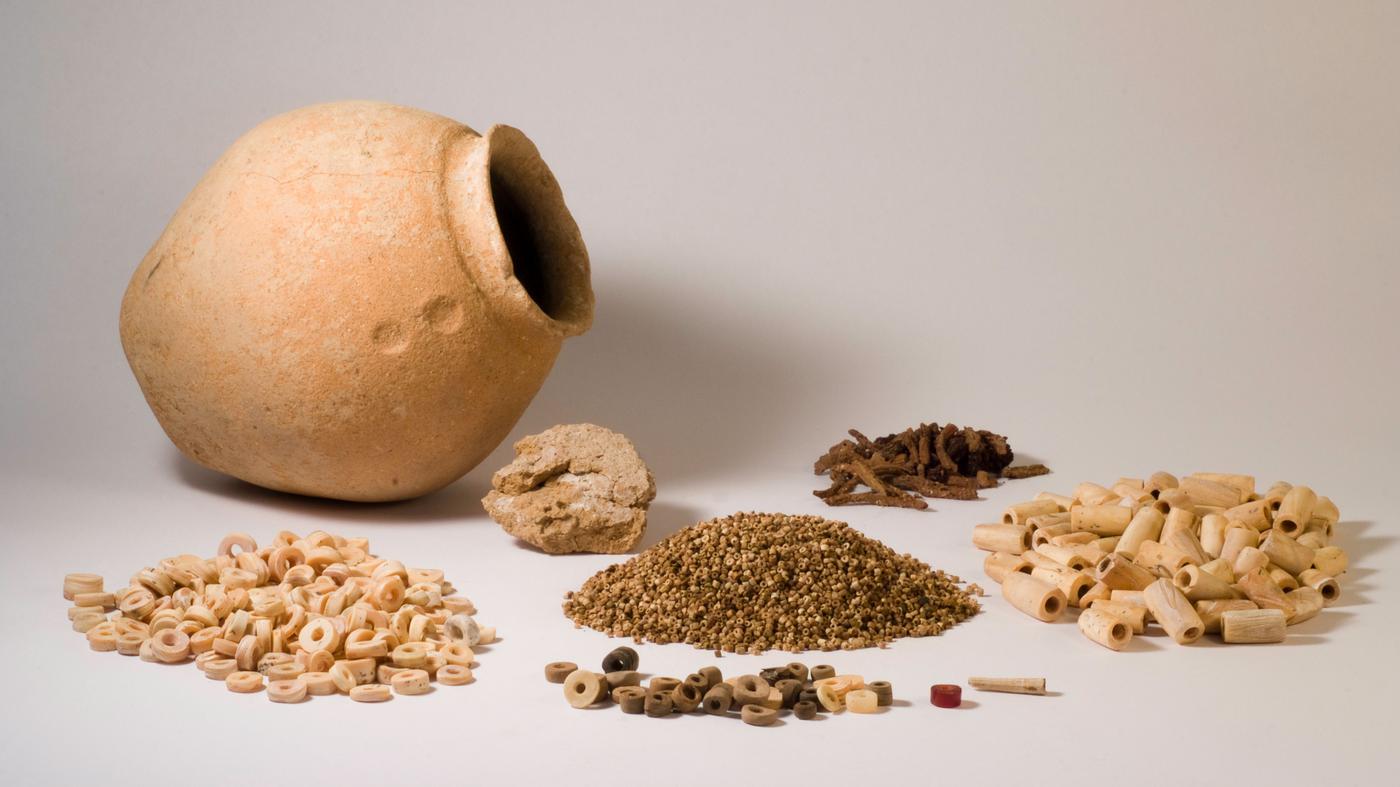tohle našli u nás Cemente, je to sice o něco mladší, ale taky topka
https://ibb.co/WHxddyz
a něco málo k té mědi – cca 7300 B.C. v Čaionu, sever Mezopotámie, se začíná zpracovávat měď kováním za studena a pak na JV cca 300 km po toku řeky Tigris žil lid Chassunské kultury (6500 – 6000B.C.) a u ní je doloženo tavení a odlévání mědi
5 600 year old pot full of beads
Categories: Nálezy nejenom s detektorem na blízkém východě
Archaeologists from the "Oriental" department of the German Archaeological Institute (DAI) and the Institute of Archaeology at Jordán University have been investigating the foundations of a house on the site of a late Copper Age settlement at Tell Hujayrat al-Ghuzlan in Jordan. In the process, they found an unusual jar containing thousands of beads made of clay, bone and shell.
The site and neighbouring Tell al-Magass have been continuously investigated since 1985. Both sites are early "industrial sites" with copper and jewelry production. Copper ingots for molds found by archaeologists here have also been found in northern Egypt. They were probably transported there on donkeys, as suggested by the bone finds. Egyptian stone vessels were imported into Jordan on the return journey.
Tell Hujayrat al-Ghuzlan was a fortified settlement inhabited between 4,000 and 3,500 BC. Mixed stone and unburnt brick structures have been found here, which were purposefully reinforced after earthquake damage. After another earthquake, the city was abandoned, but unlike many others, it was not later razed or rebuilt. Remains of the labyrinthine layout of the settlement have survived, with walls up to 6 metres high with original plasterwork, windows, doors and pillars supporting the roofs.
Before the discovery of the vessel, the archaeologists' goal was to reach the lowest floor of the buildings. In one of the houses, they actually succeeded. "We found the foundations of several rooms, but there was really nothing underneath," says Jens Notroff of DAI, who worked as a research assistant at the site. A little later, Notroff discovered three clay pots in a niche in the corner of the room. One was broken, a large one contained sand, and the third, a small spherical container, was sealed with a clay stopper. Notroff carefully lifted the cup and something rattled inside...
The container was taken to the backroom, carefully cleaned, photographed and drawn in detail. Notroff and his colleagues then carefully removed the clay stopper. Inside was a large assemblage of beads made of bones and shells. All the tiny beads were perforated and polished. "Just drilling and polishing these beads took a lot of work. Others were larger, also elongated in shape," Notroff described.
This type of bead was used, for example, as jewellery and as a decoration for clothing, but its location and weight are unprecedented. "I imagine that it was a kind of storehouse of art objects, perhaps good luck charms, that were placed here. The niche seems to have been precisely prepared for this." In any case, beads made in this elaborate manner were of high value in their time.
The finds in the adjacent room also suggest that it must have been a special construction. Here, depictions of animals were discovered on the back wall, which had been pressed by fingers into the still damp clay of the wall. Capricorns and birds of prey can be recognised as dotted drawings. In the backfill of the room, archaeologists also discovered numerous ibex horns and considerable layers of ash. It is possible that the building was destroyed by fire.
The extraordinary preservation and relatively short period of occupation gives archaeologists a unique opportunity to investigate a Chalcolithic settlement from the turn of the Copper and Bronze Ages. At that time, Tell Hujayrat al-Ghuzlan and its neighbouring town were not only an important copper processing centre, but also an important trading hub near the Red Sea between the Levant and Egypt. The mystery of the beaded vessel is still awaiting its definitive solution: the site of the discovery is still being evaluated by the DAI's Oriental Department.
Roman Nemec
Sources: thehistoryblog.com, tagesspiegel.de, uaportal.com

The pot contained thousands of beads

Jens Notroff

tall hujayrāt al-ghuzlān

southern part of the fortification and houses tell hujayrat al-ghuzlan

show
The article is included in categories:
- Archive of articles > Archaeology > Finds and rescue research abroad > Nálezy nejenom s detektorem na blízkém východě



